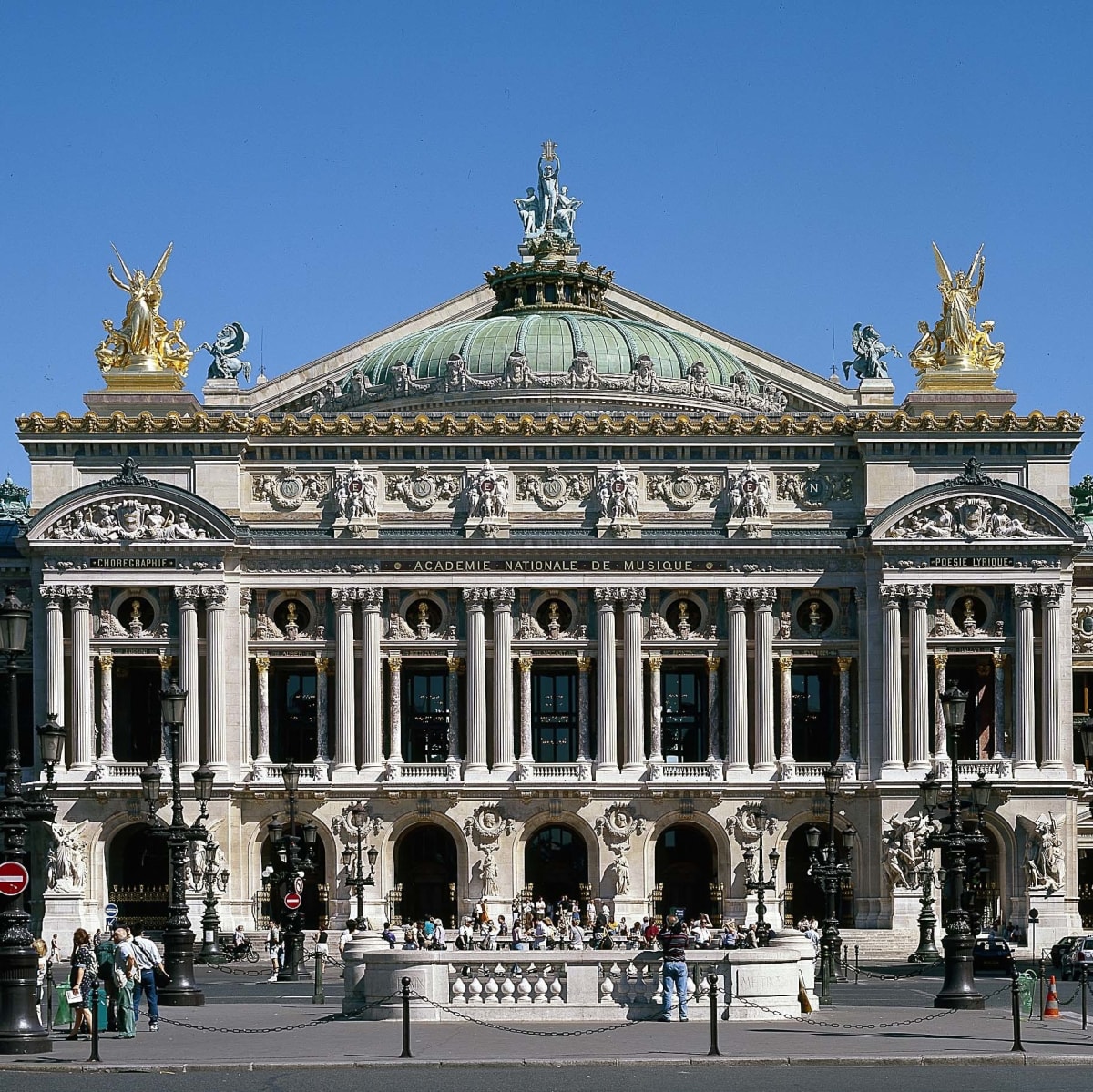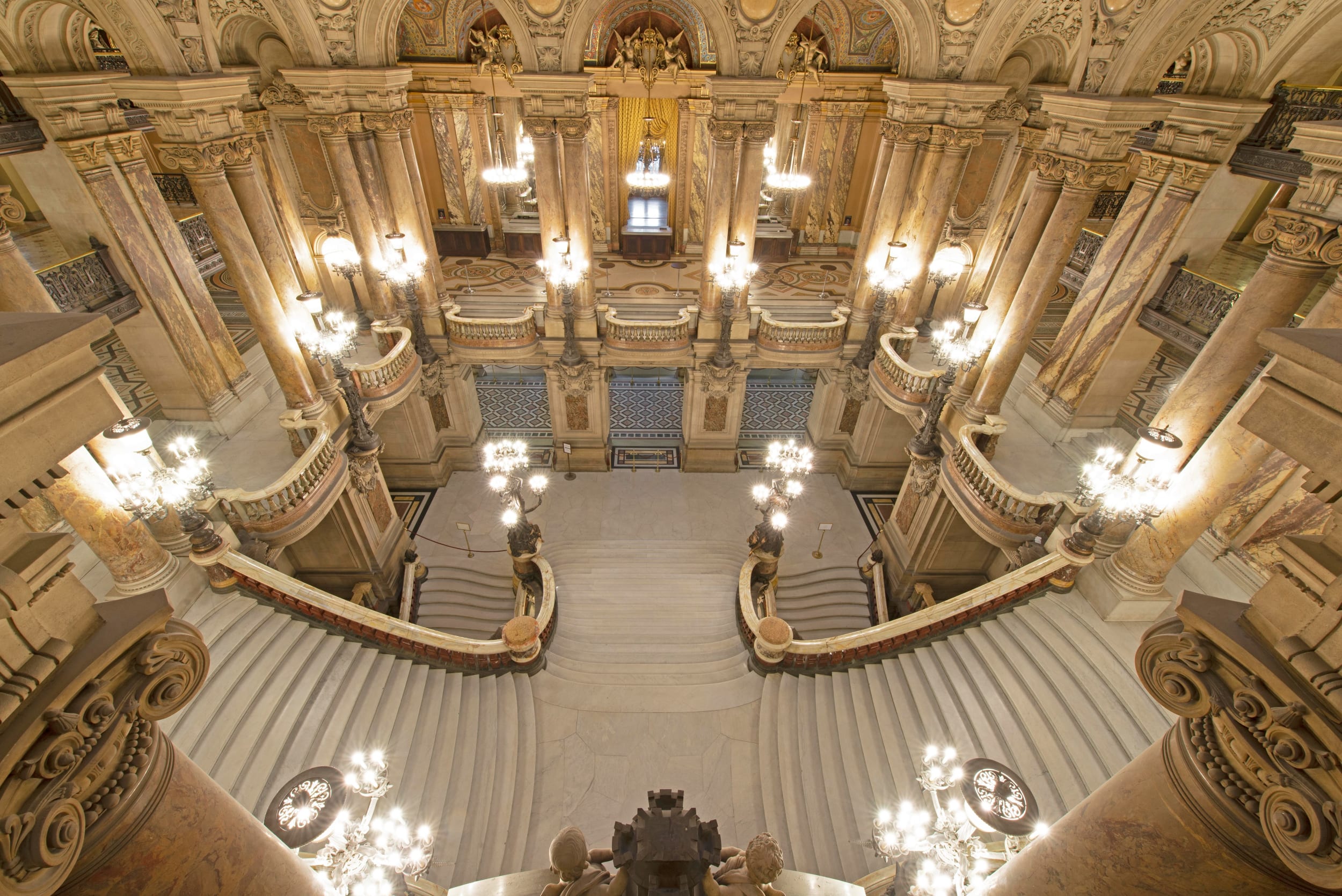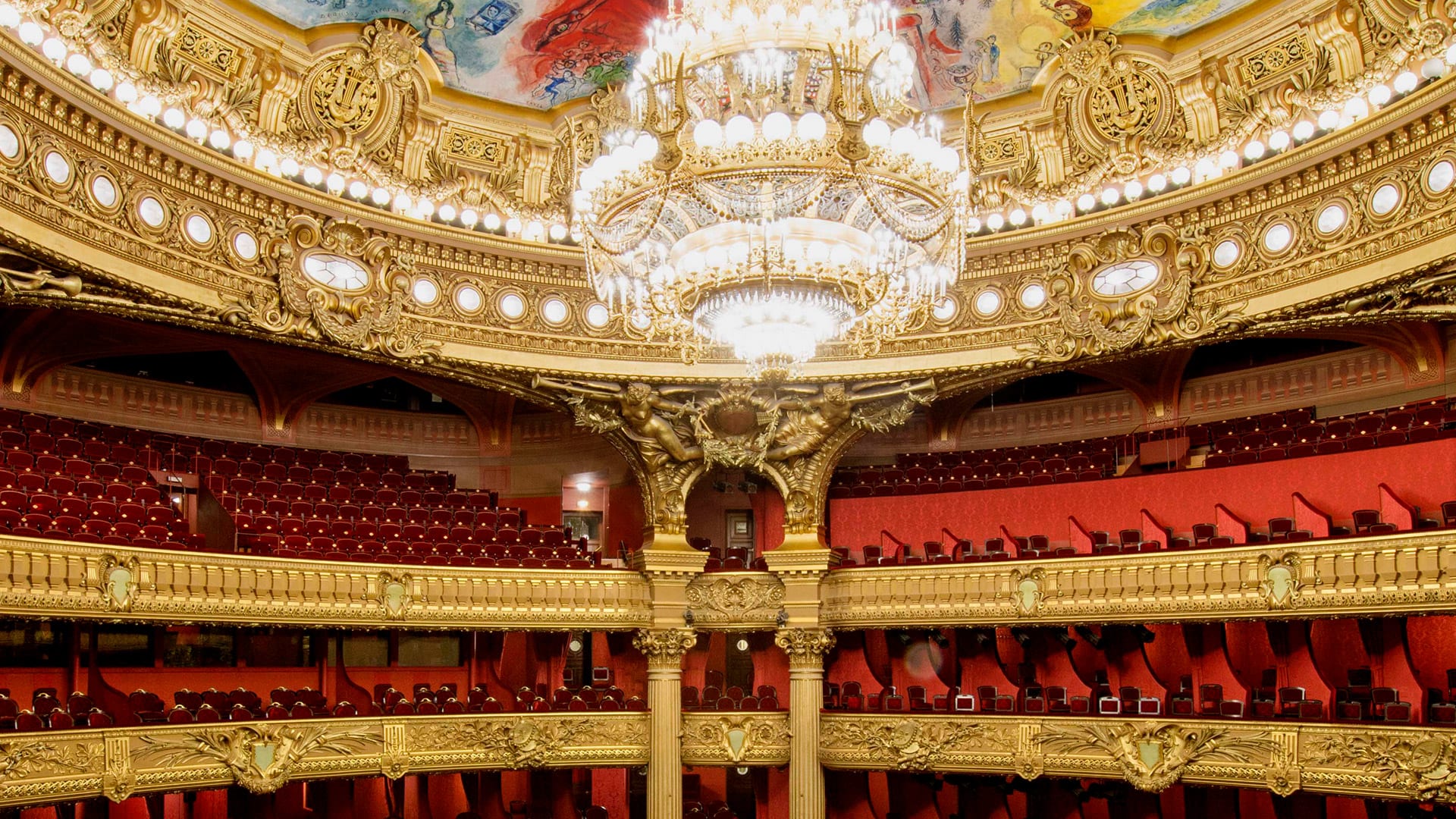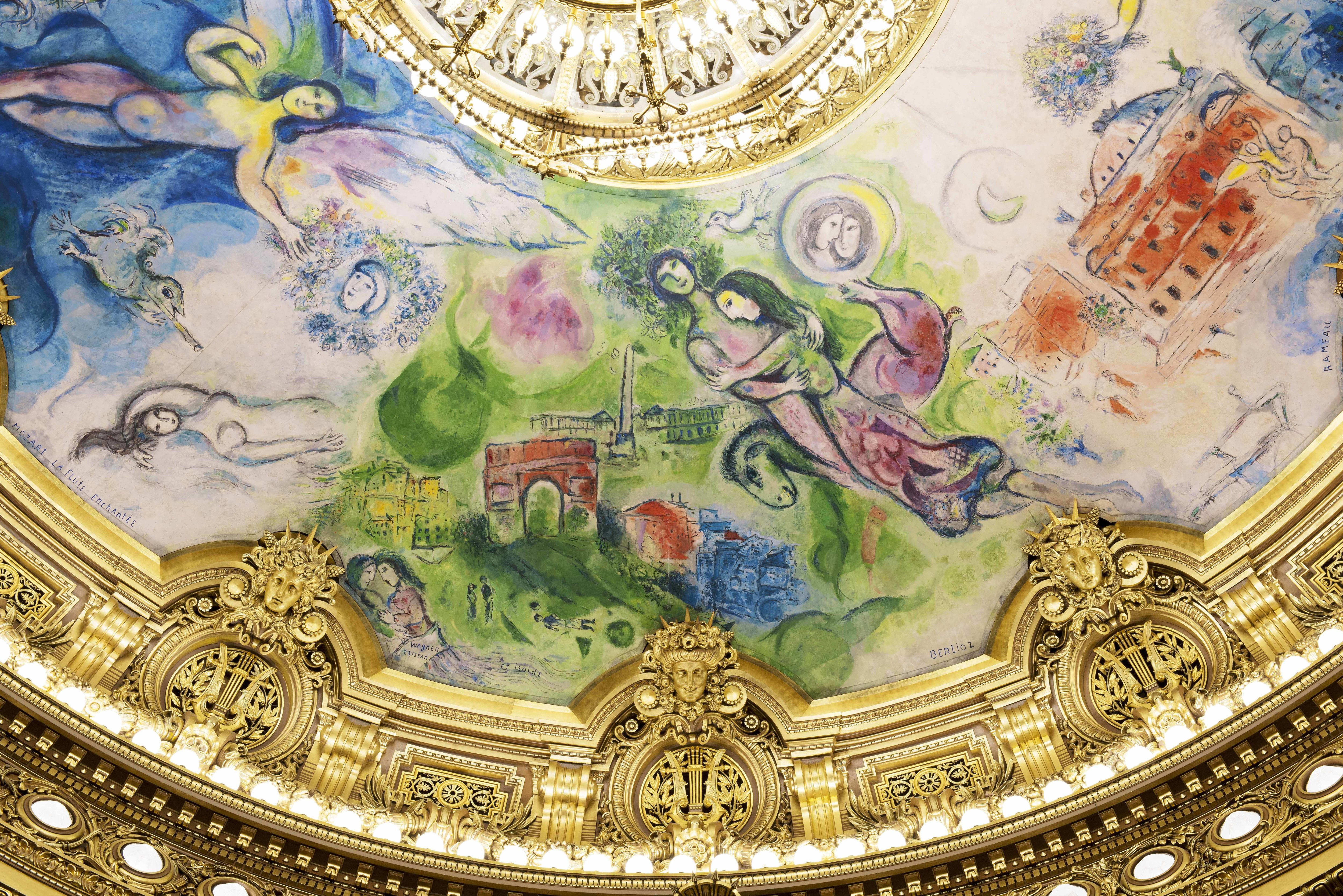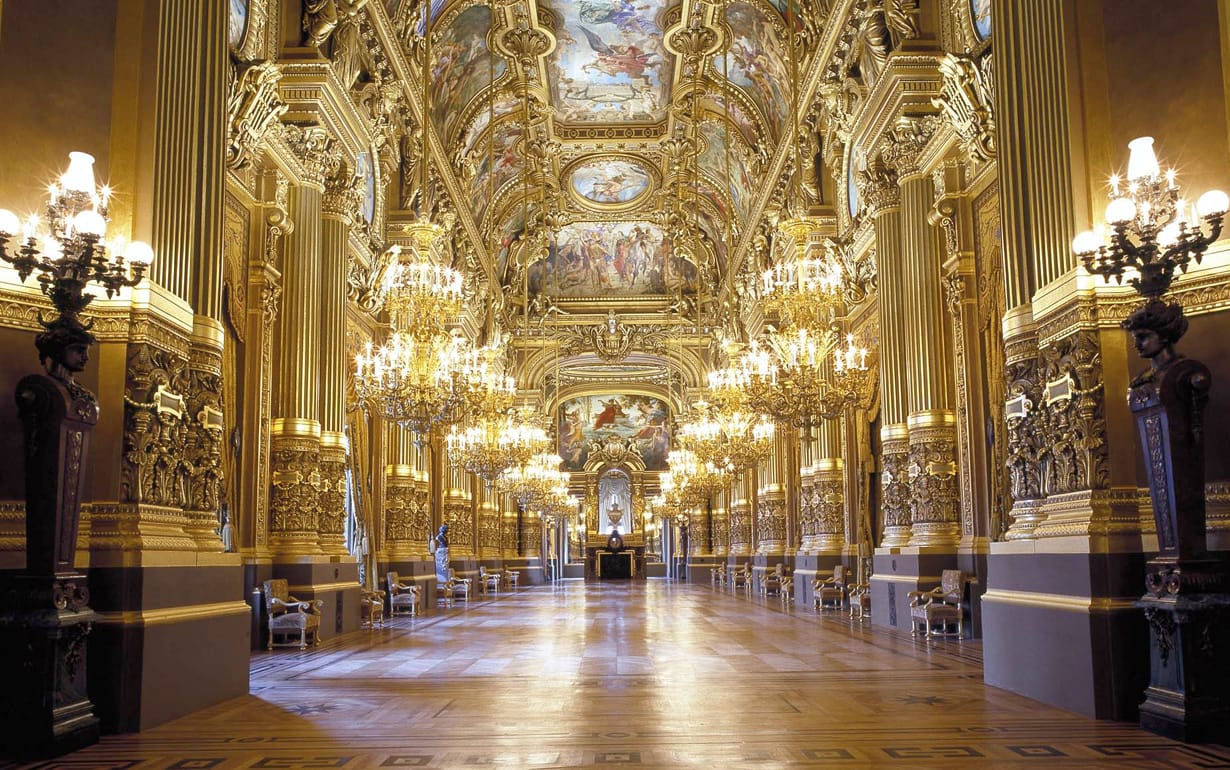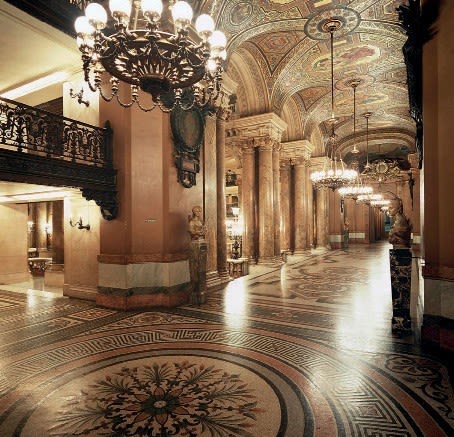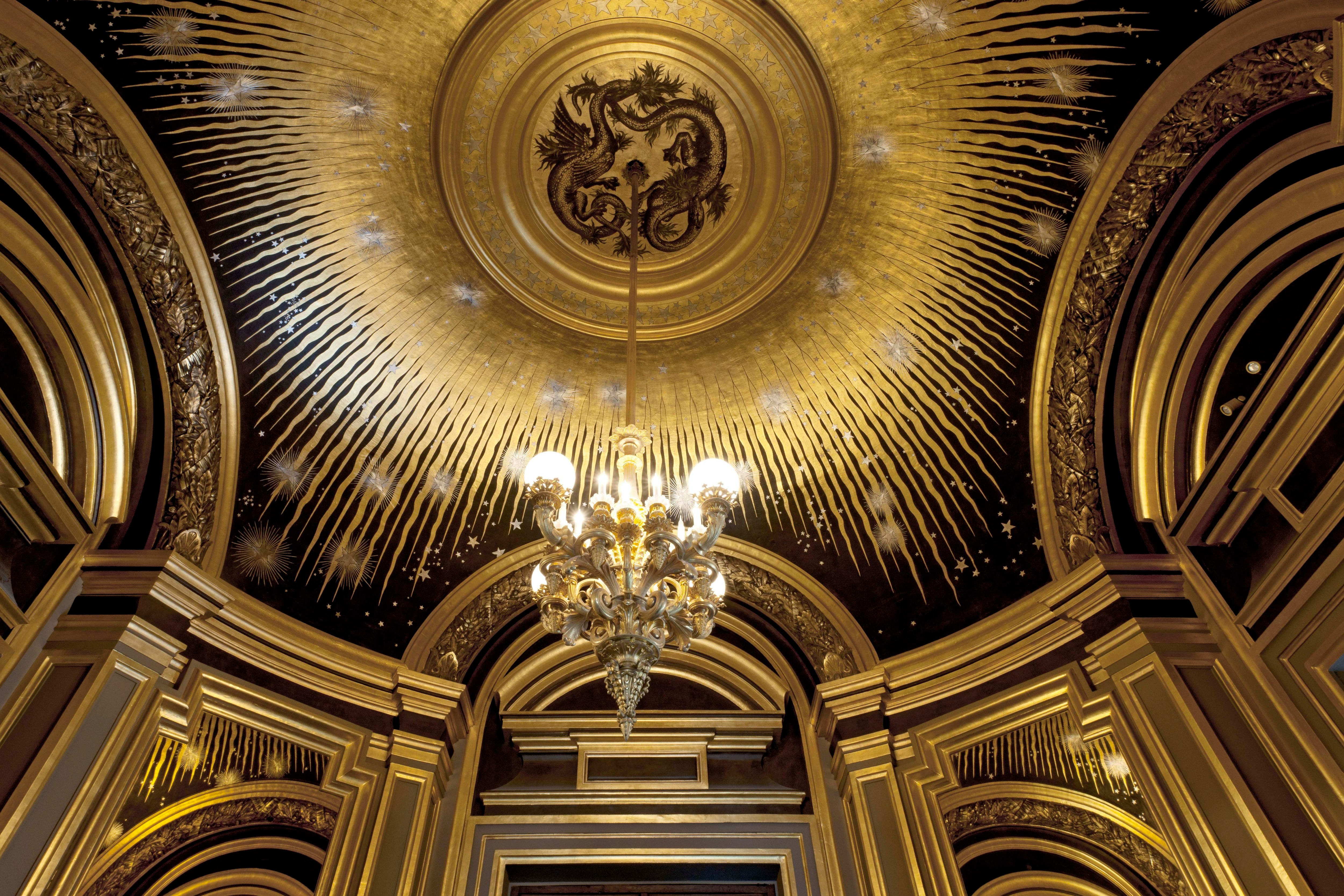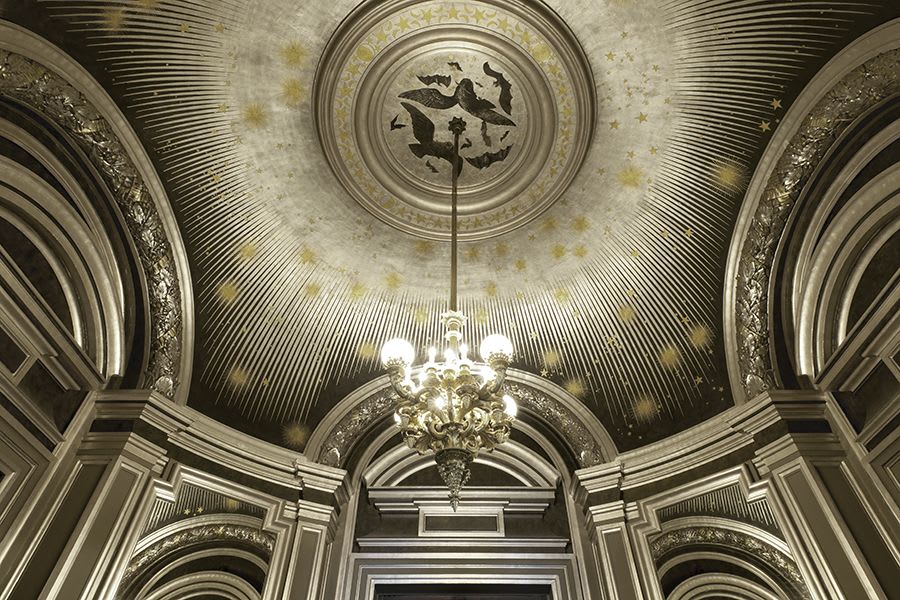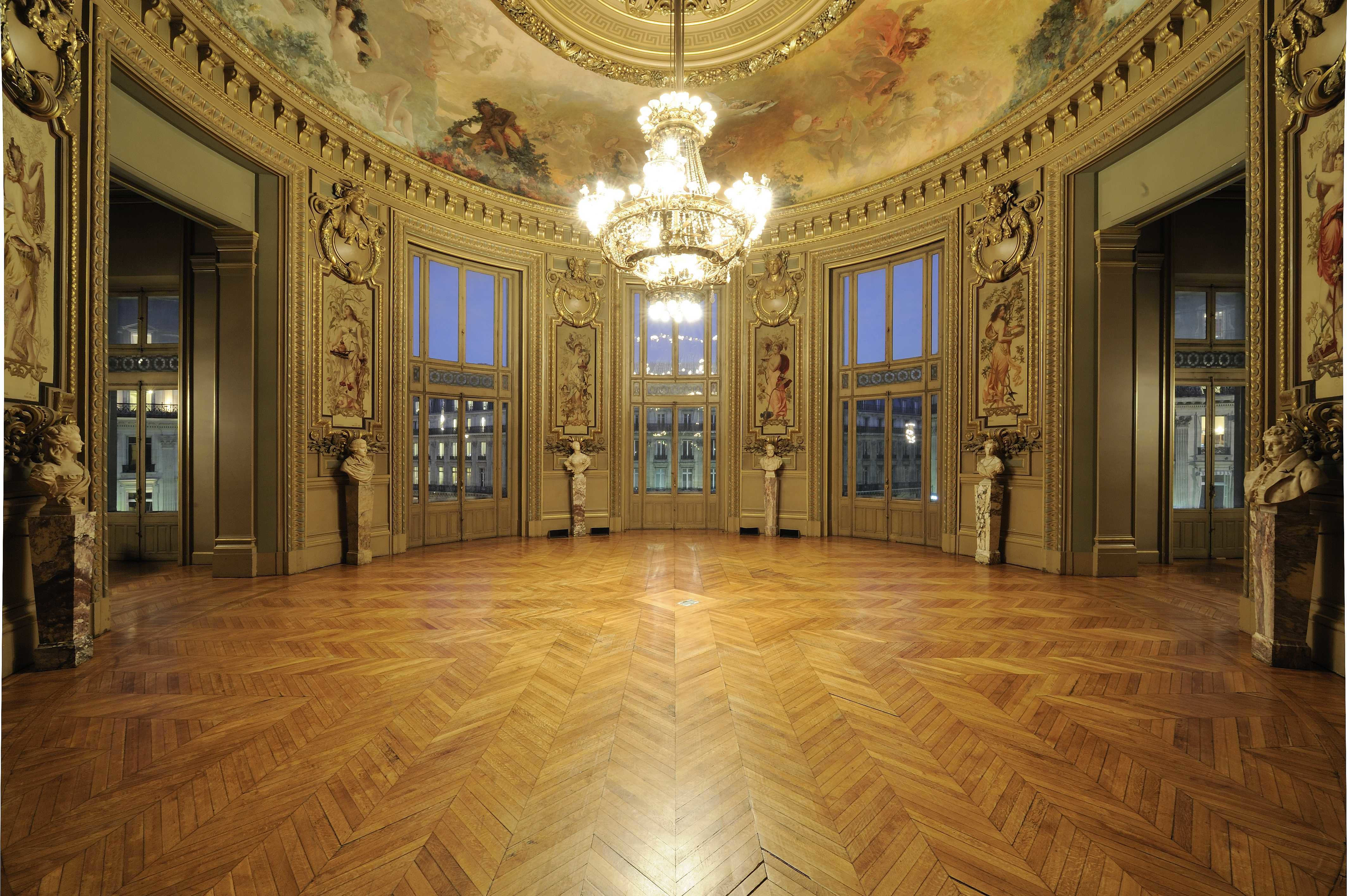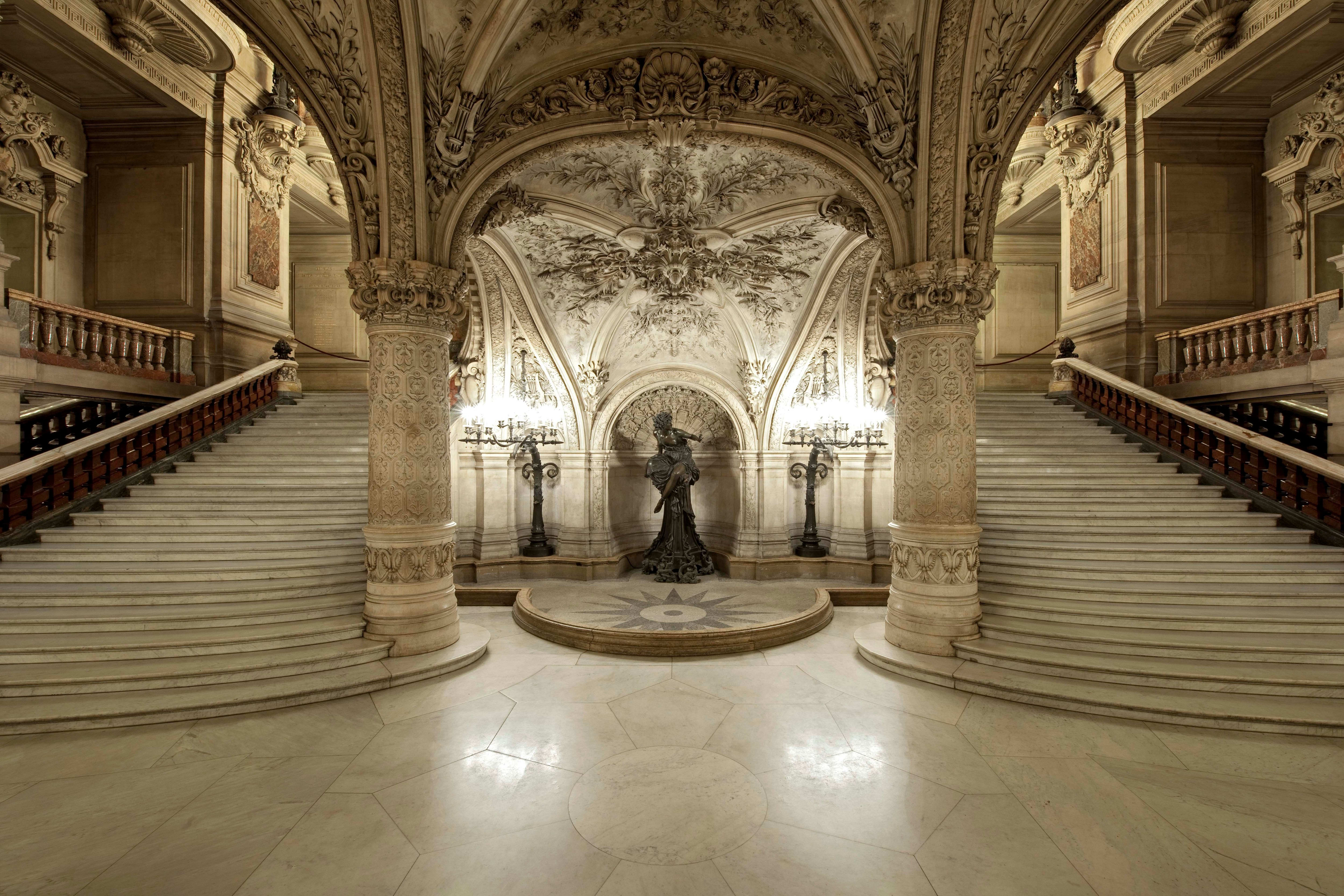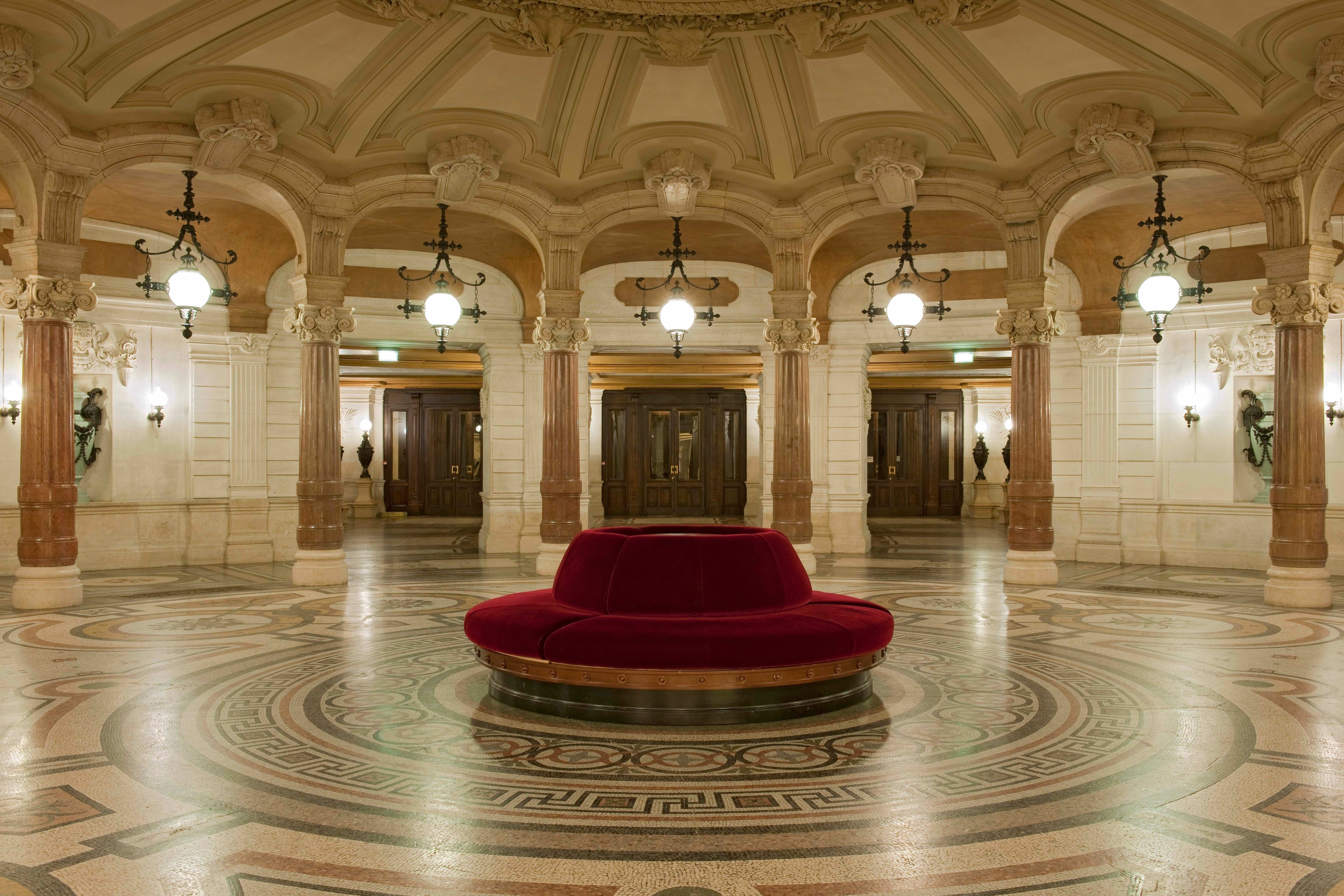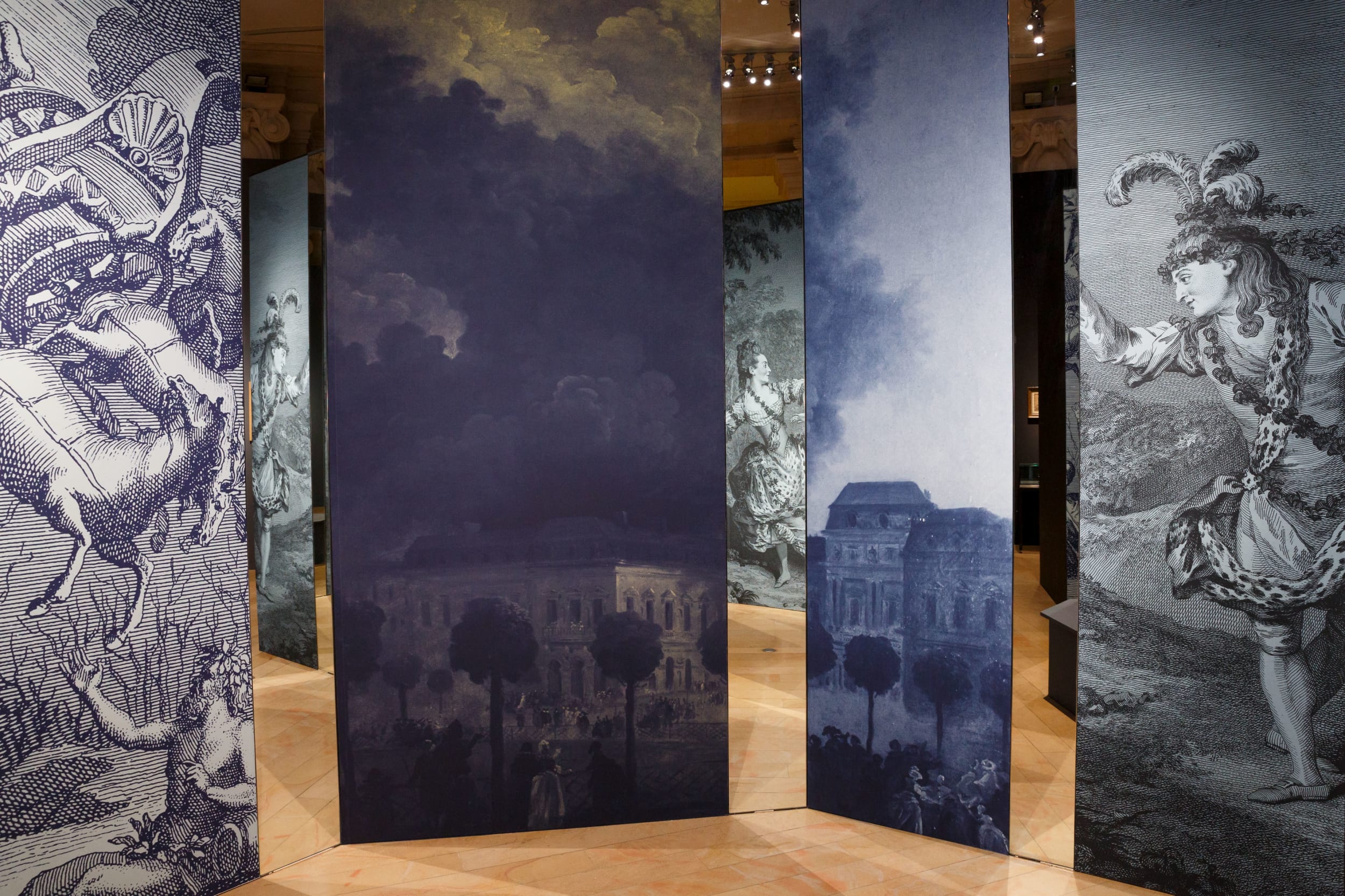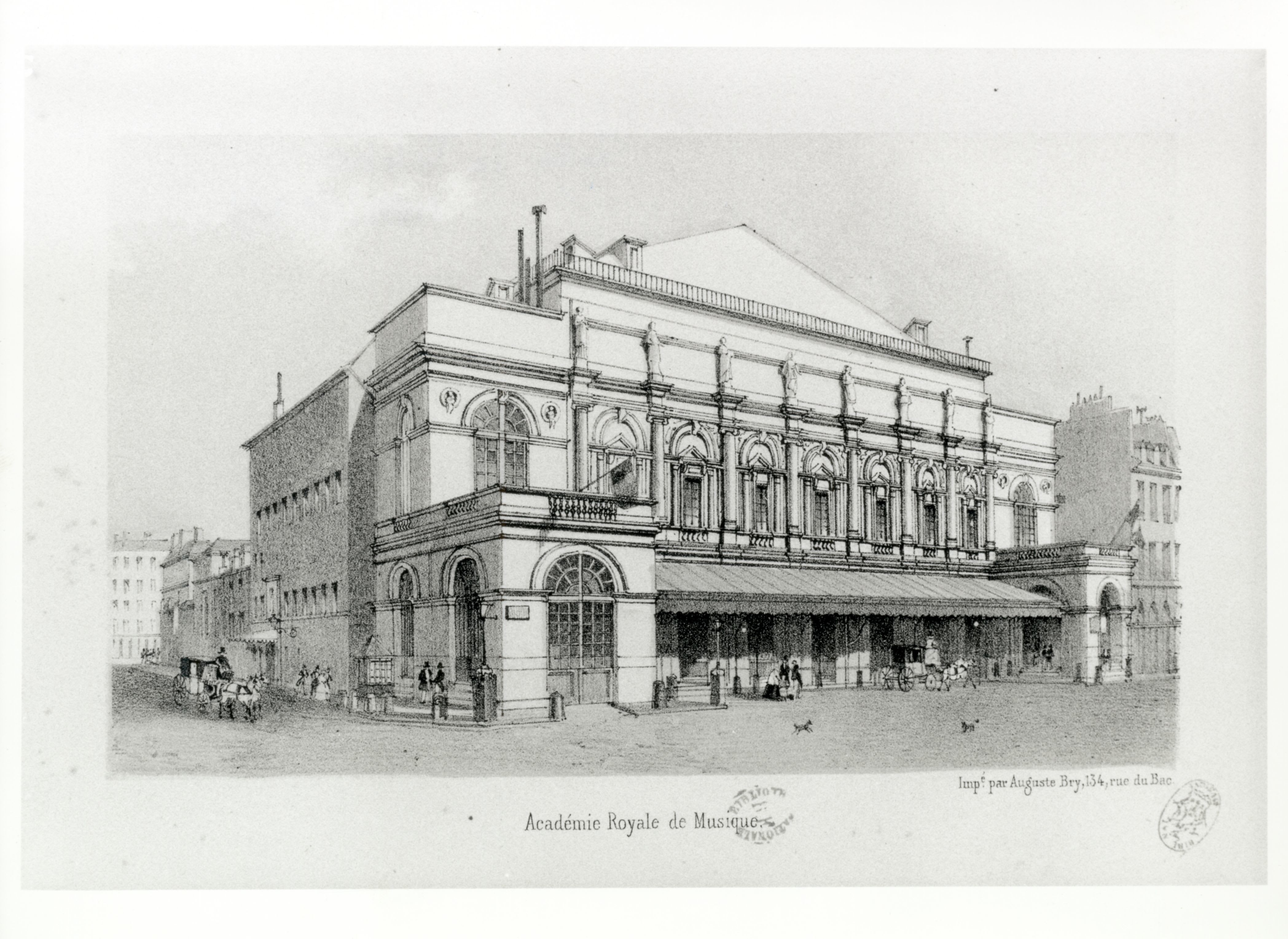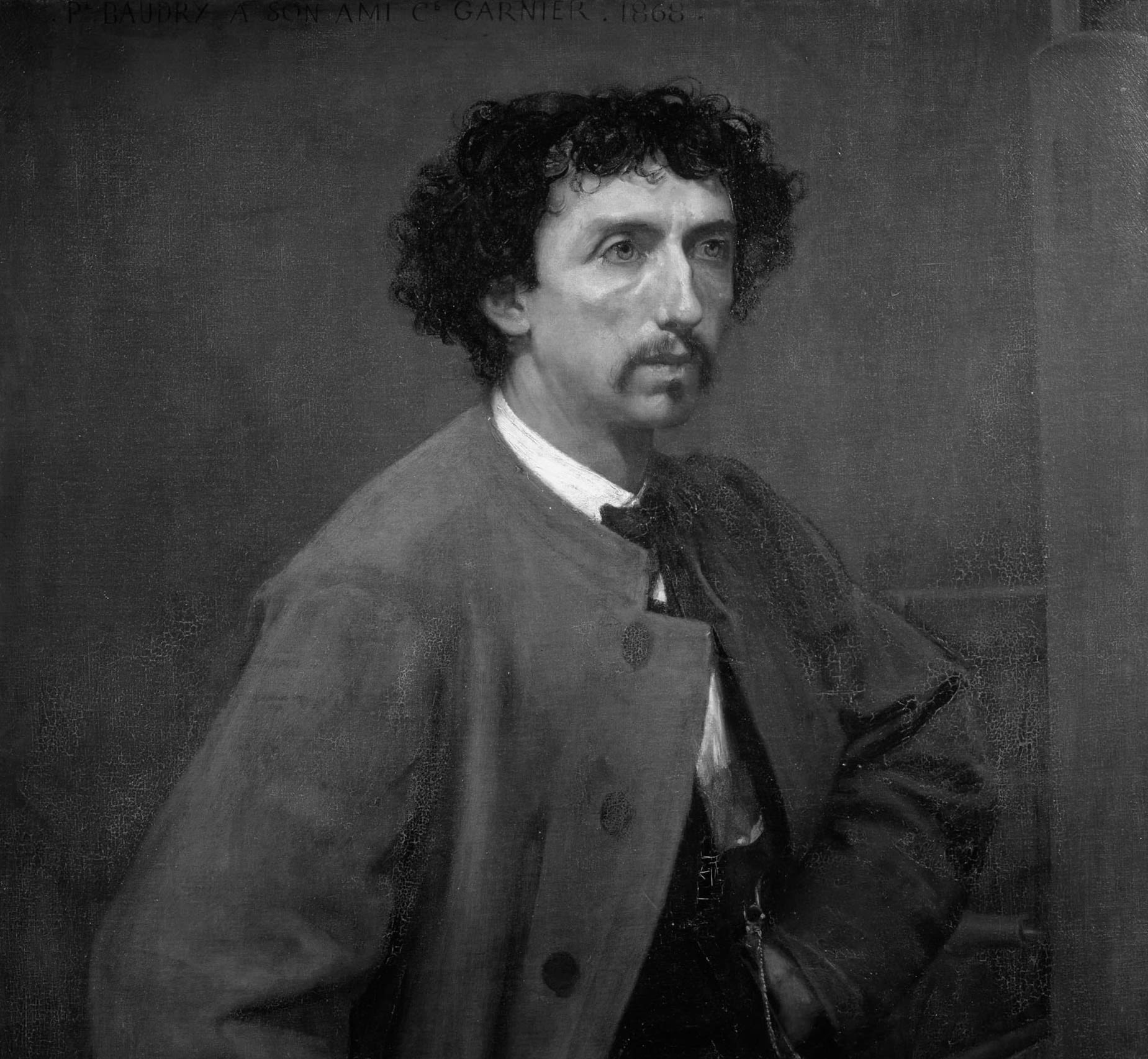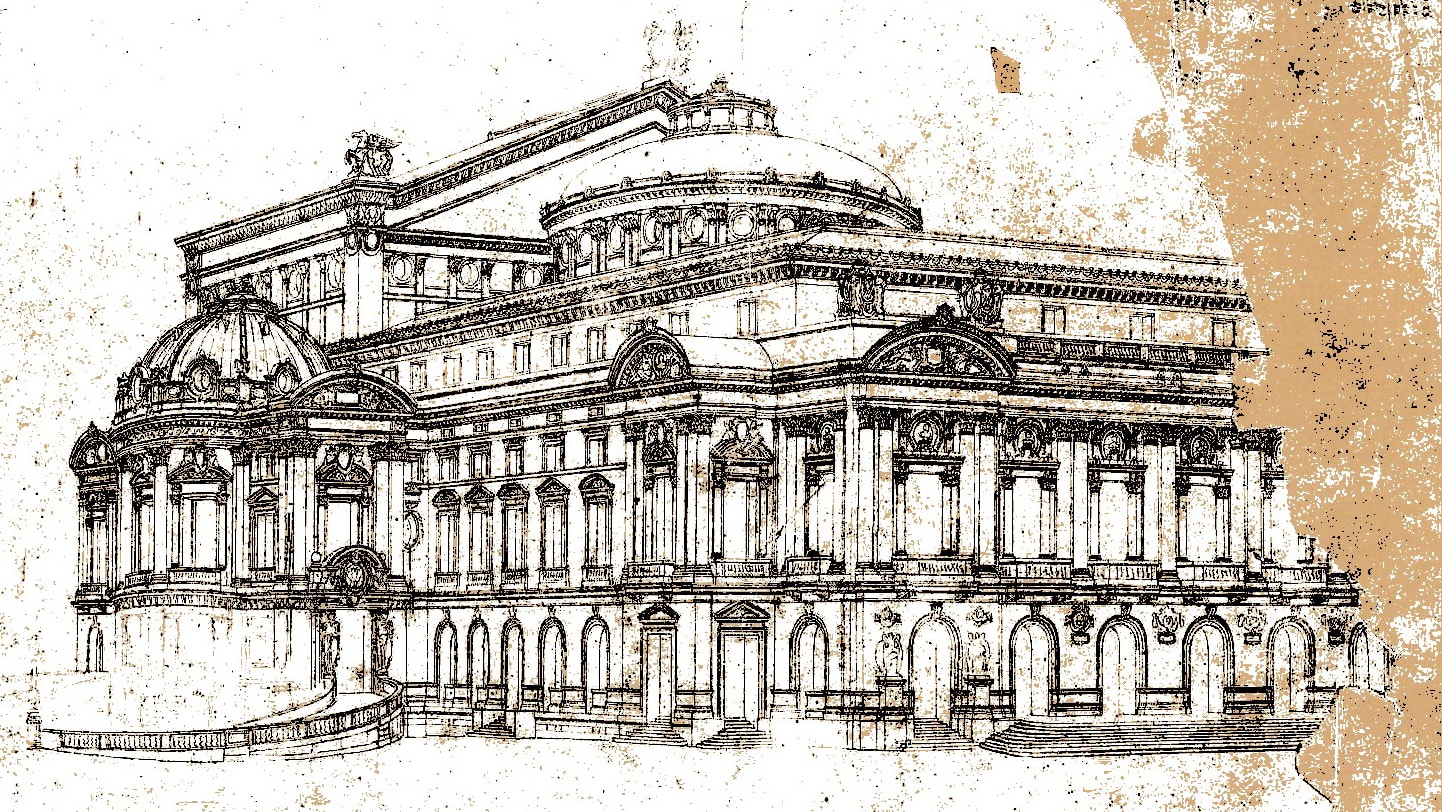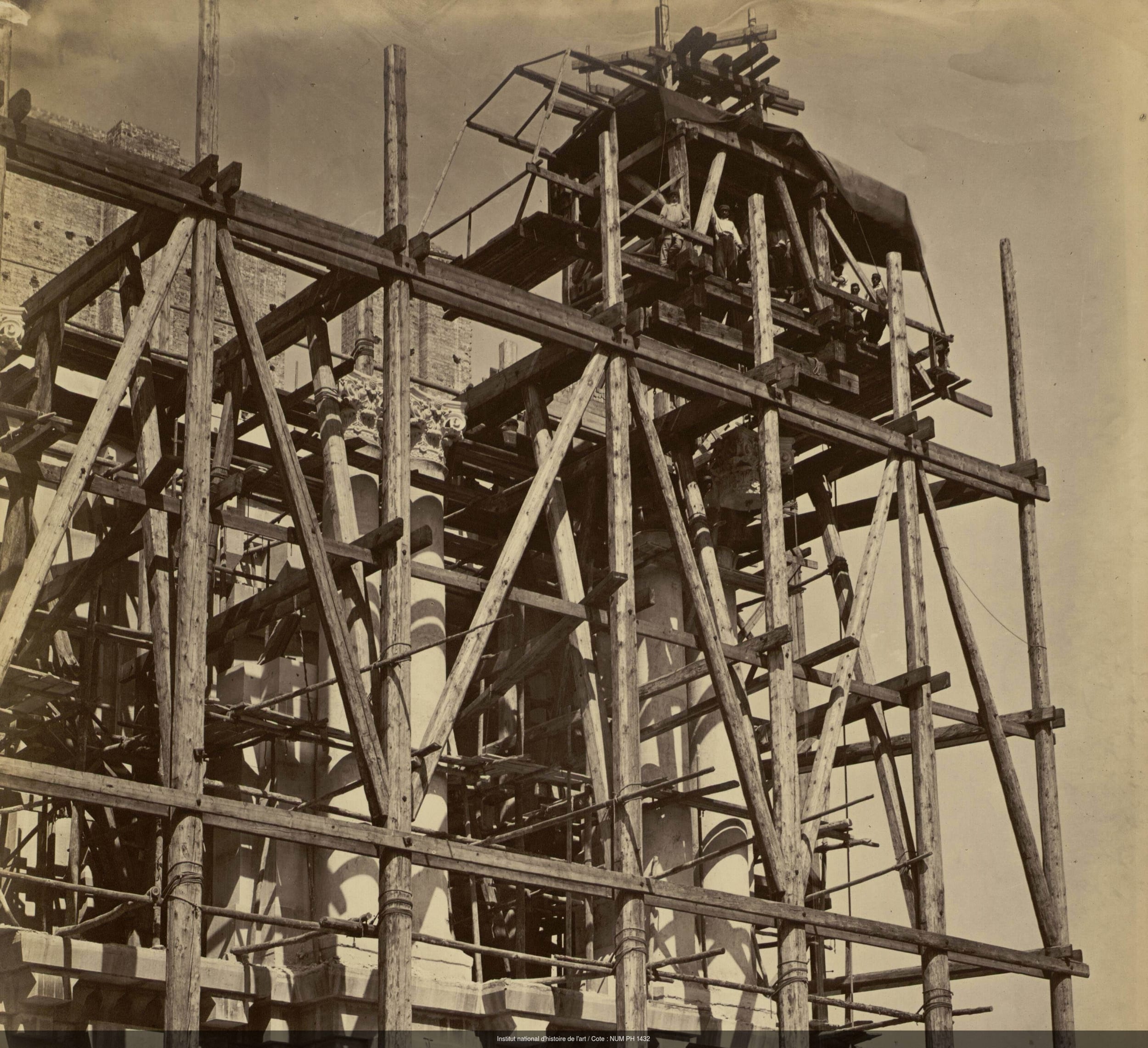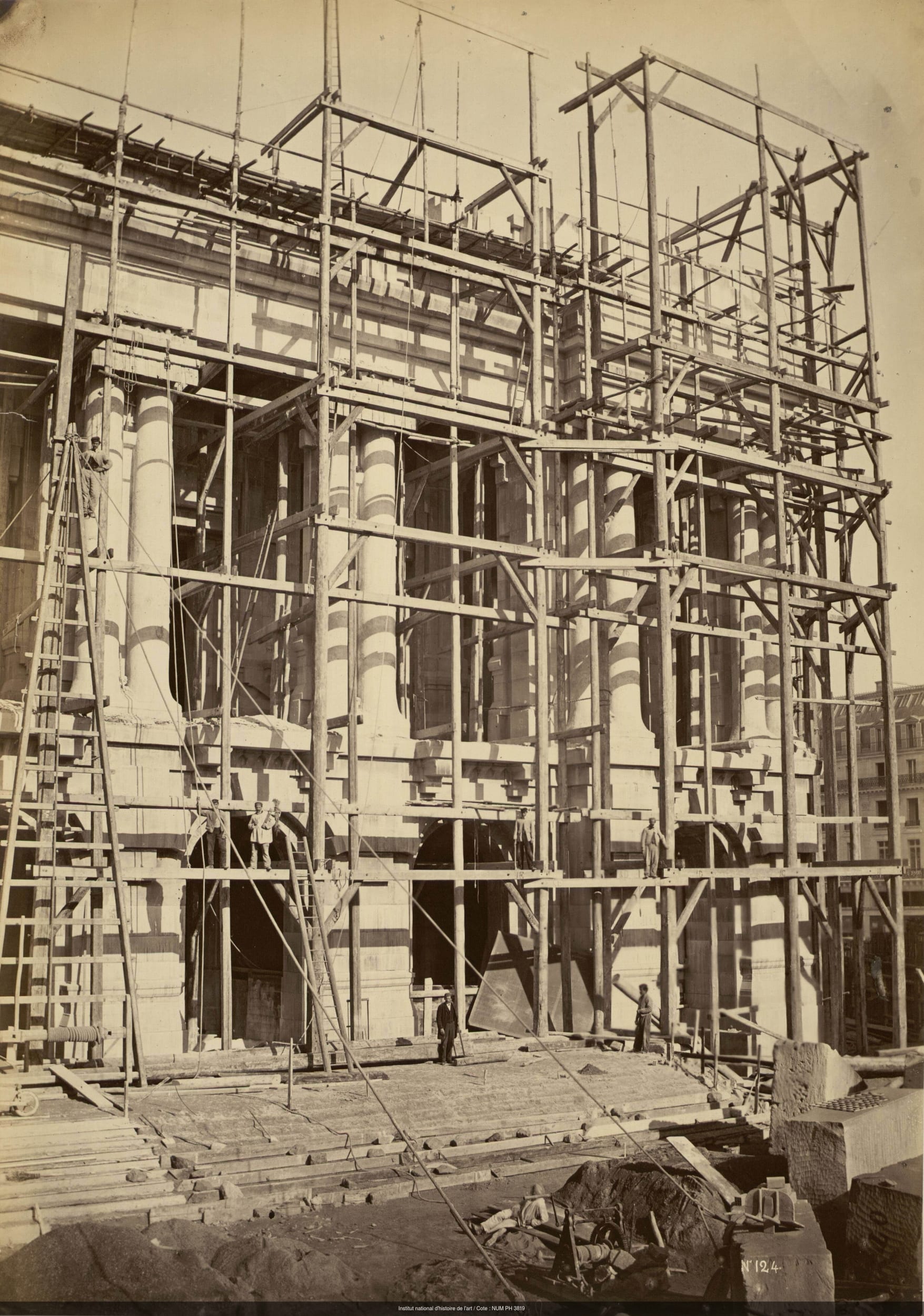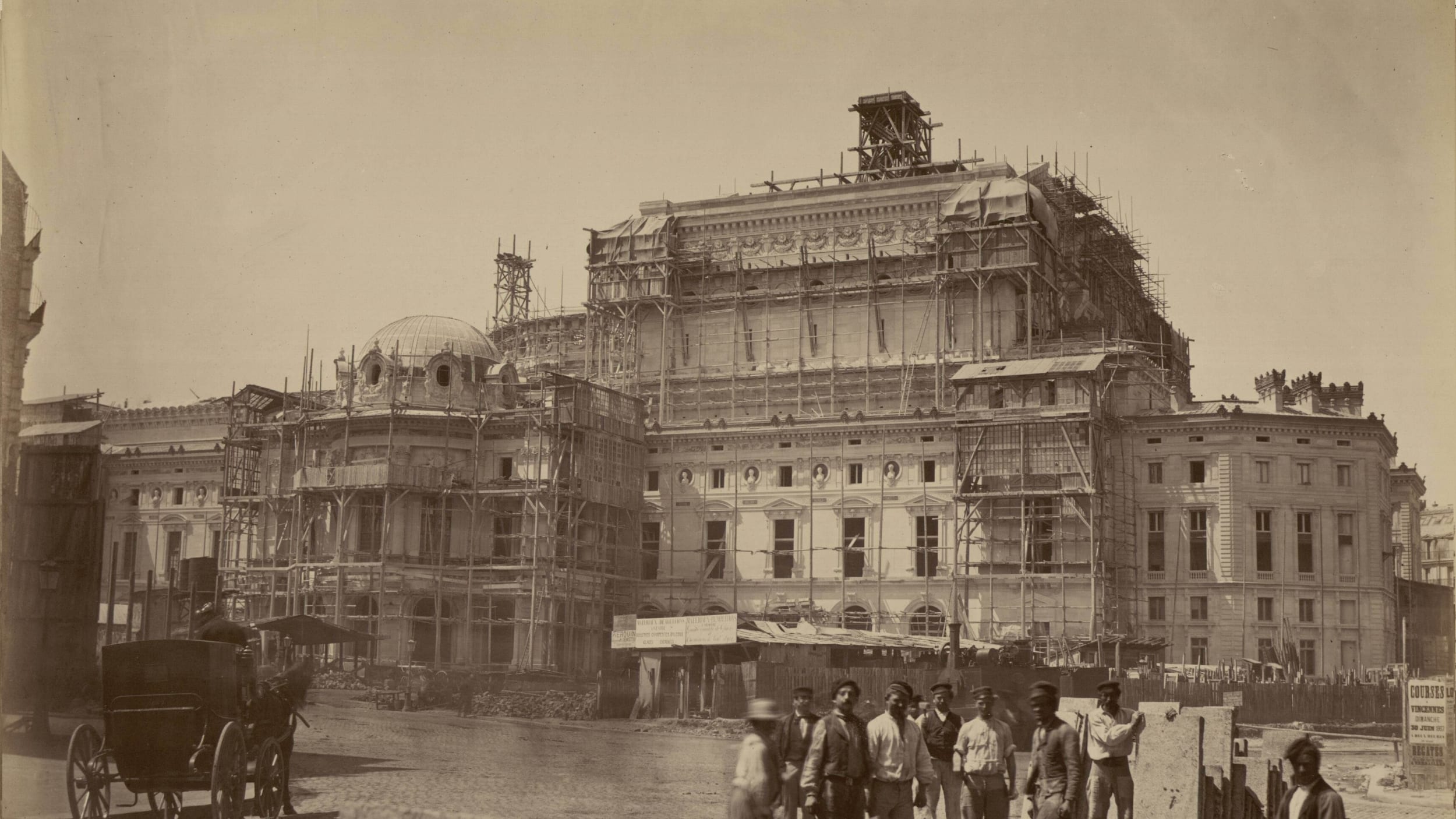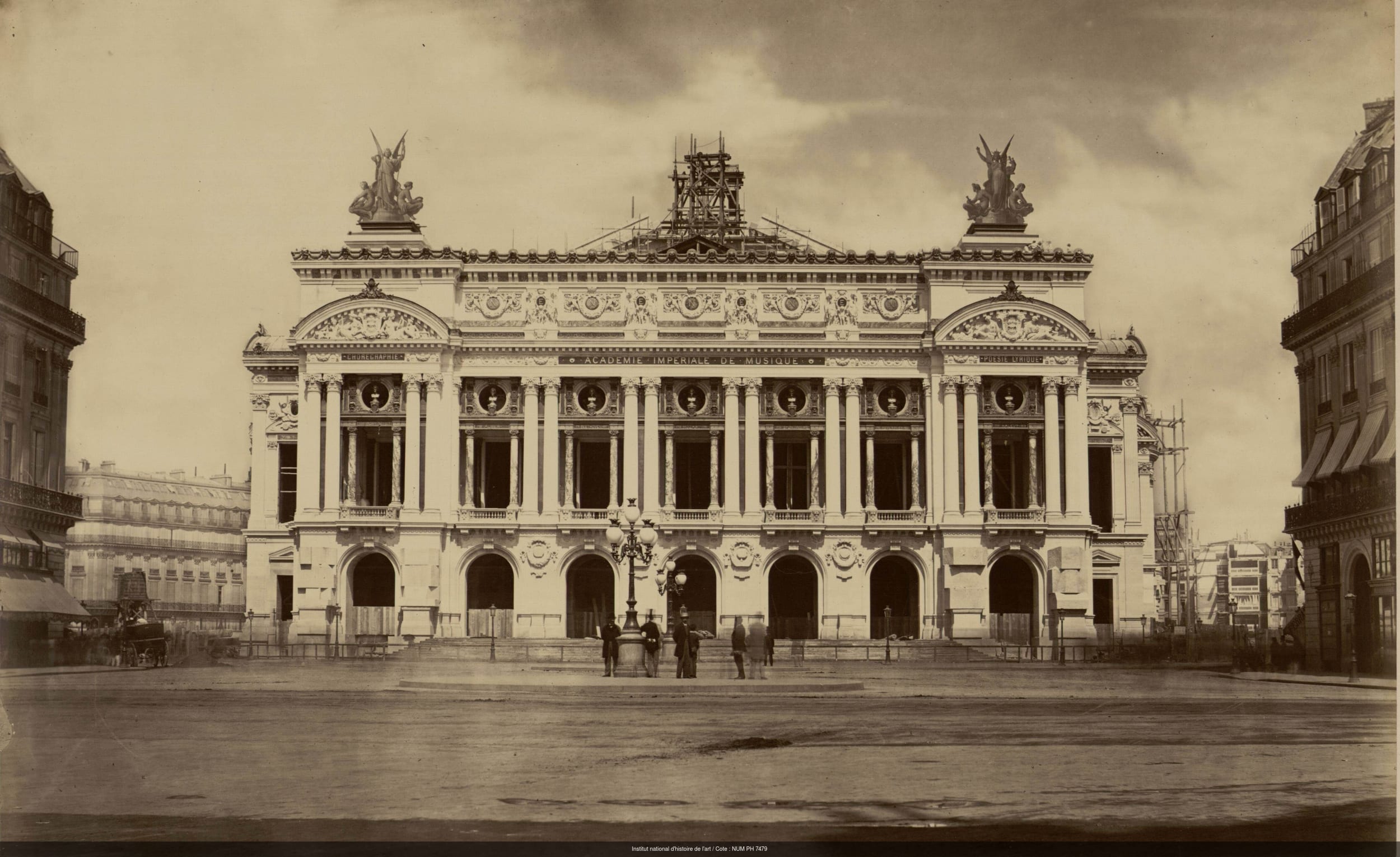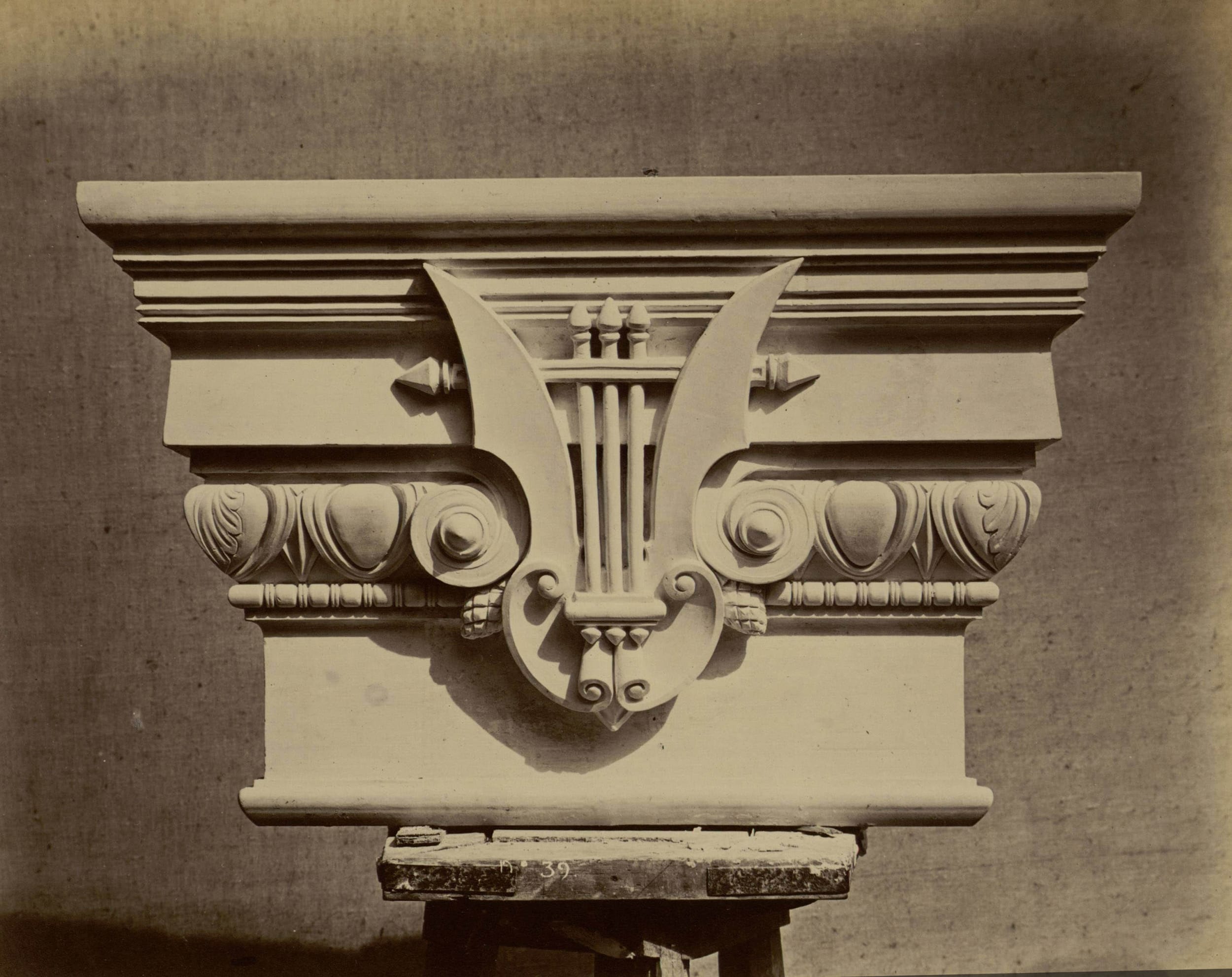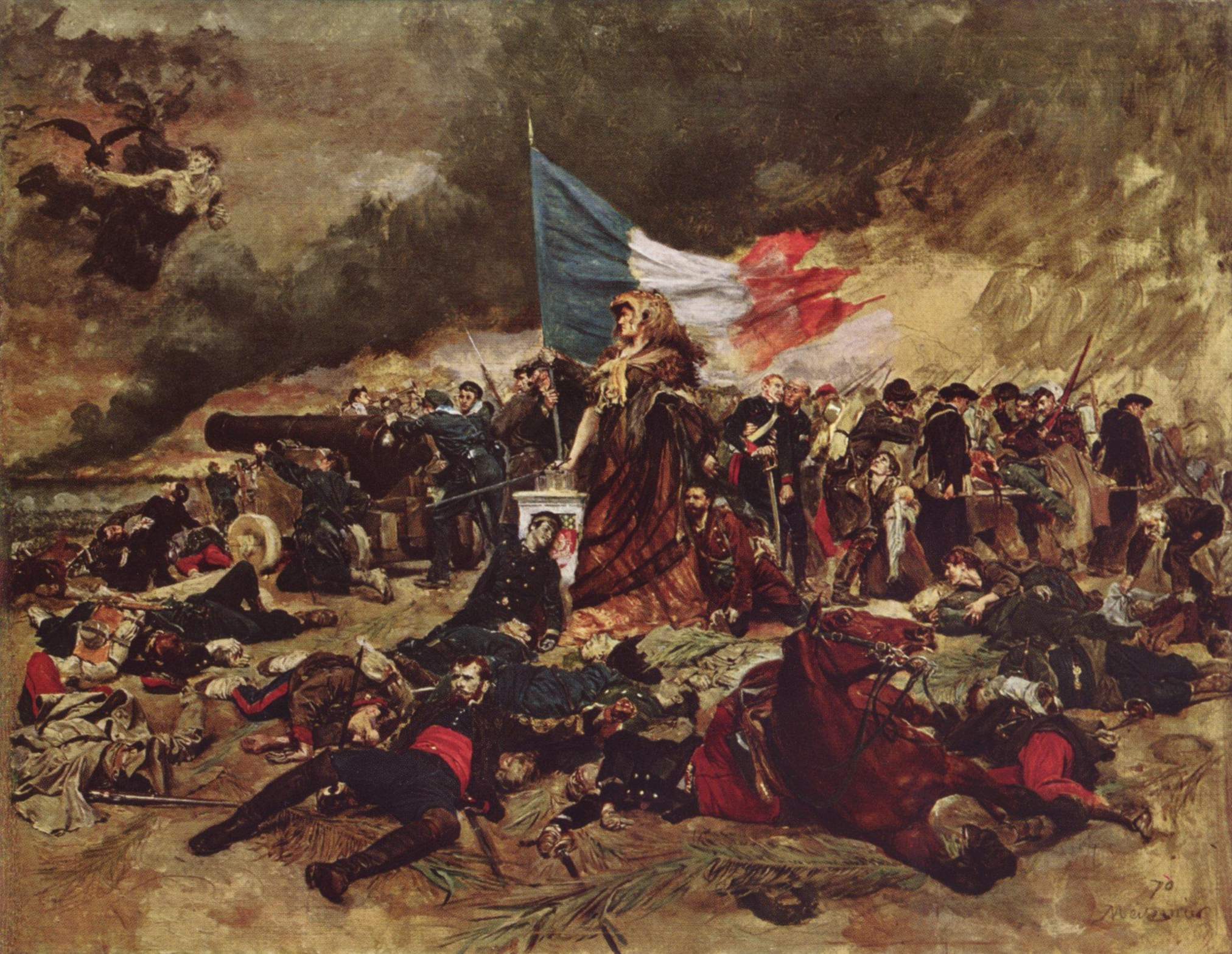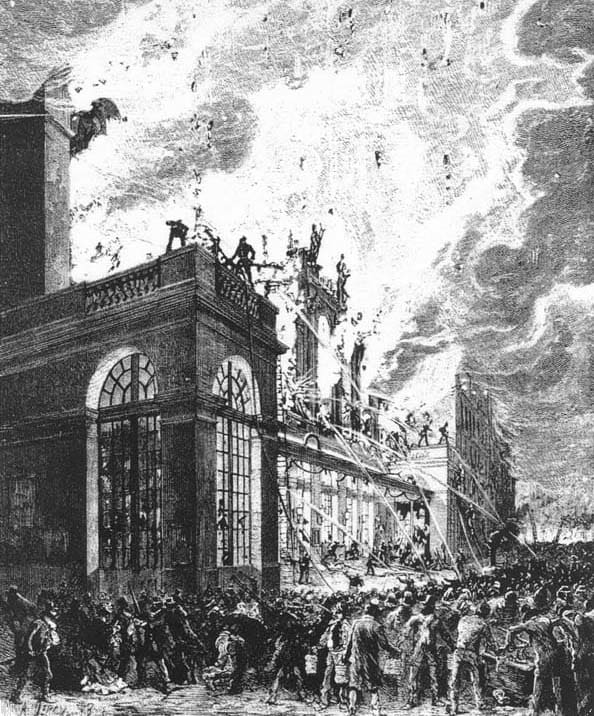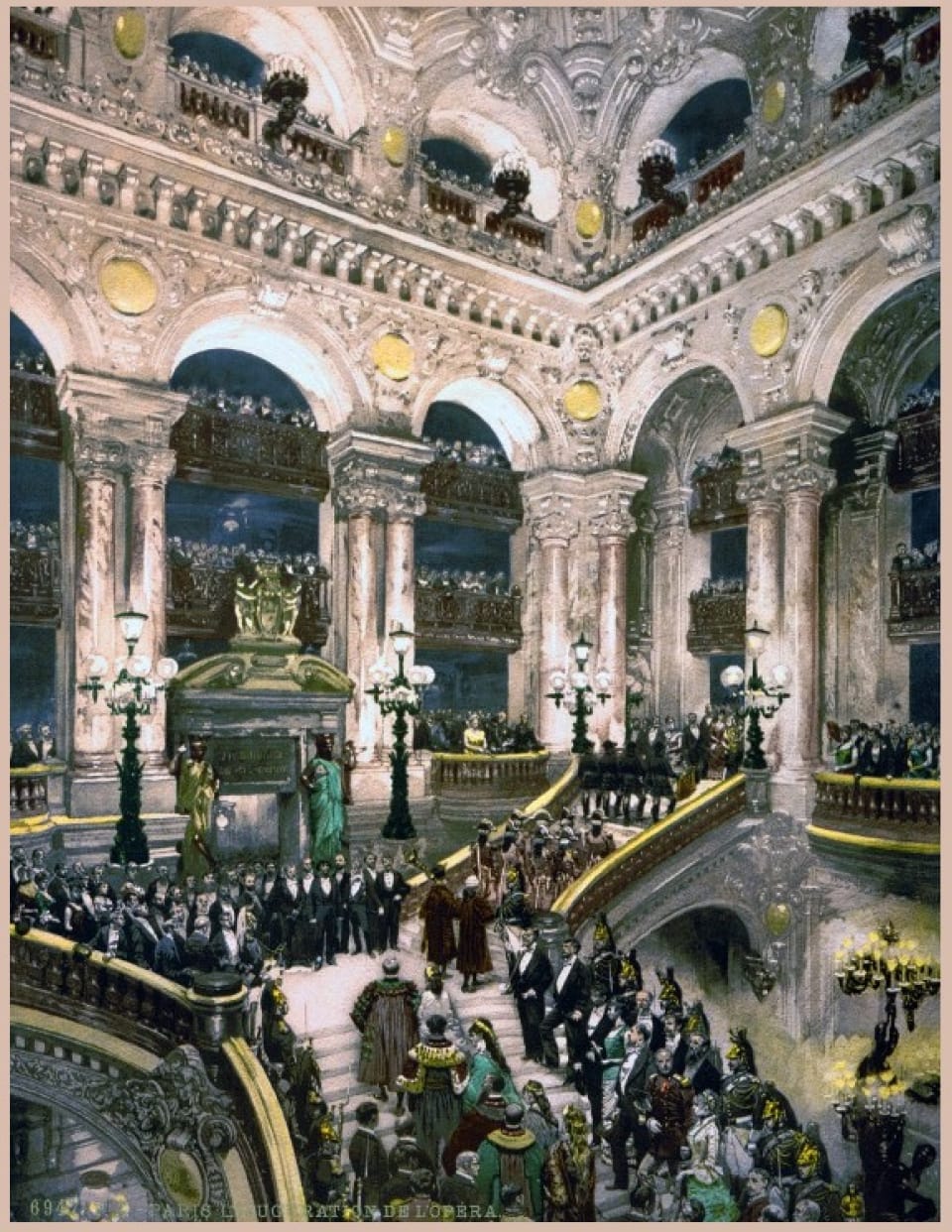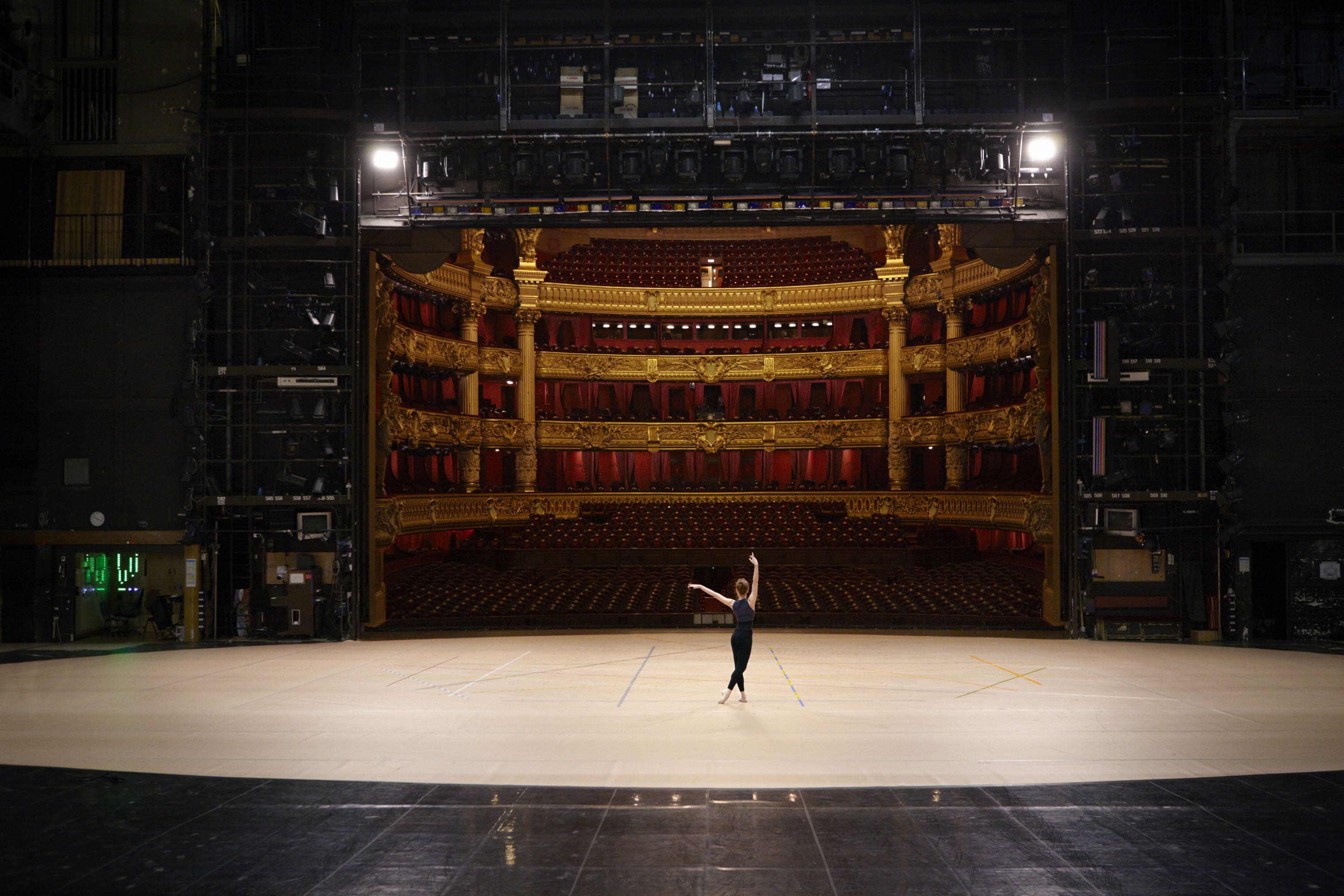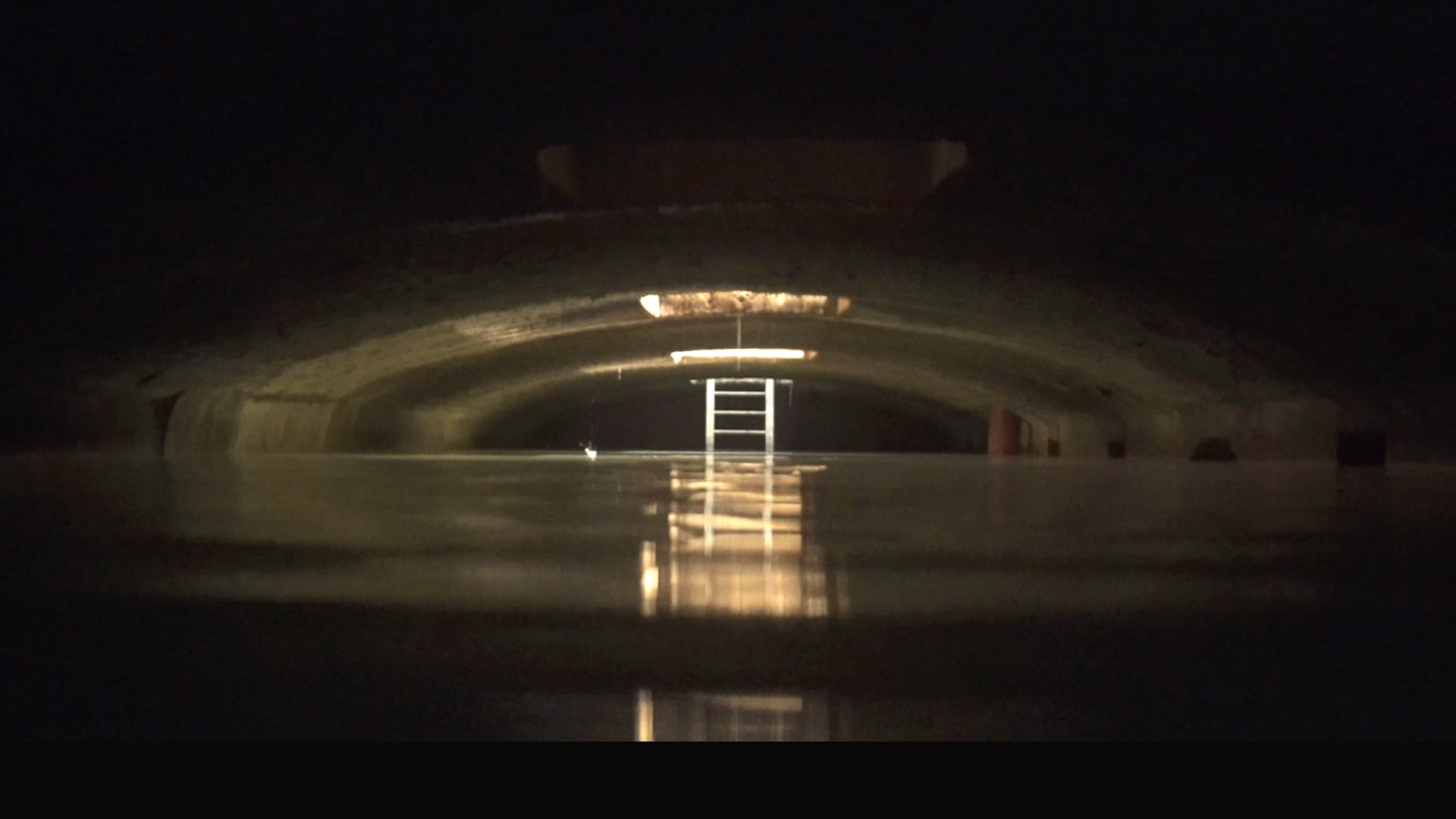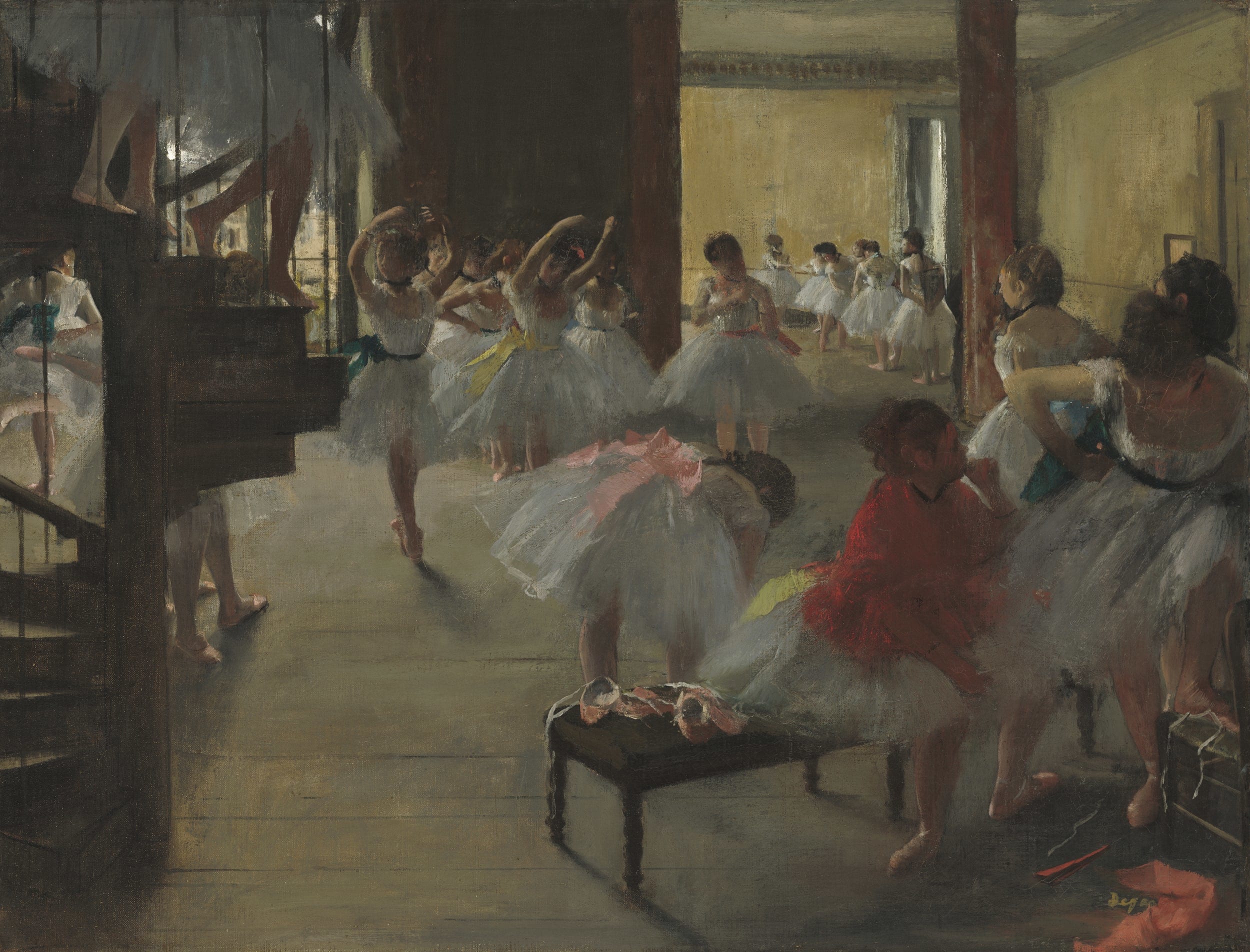Prices
Show / Event
Venue
Experience
No result. Clear filters or select a larger calendar range.
No show today.
Designed by architect Charles Garnier in 1875, the Palais Garnier hosts a prestigious auditorium and various public areas (grand foyer, rotonde des abonnés, lounges), as well as a museum-library and different rehearsal studios and workshops.
The Italian-style auditorium, with its ceiling painted in 1964 by Marc Chagall, can welcome 2 101 spectators. With nearly 480,000 visitors each year, it is one of Paris' most visited monuments. It has been listed as a historical monument since 1923.
Visit the Palais Garnier
Discover the treasures and secrets of this 19th-century theatre architecture’s masterpiece.
Discover the different areas
The construction works
Gallery

Le grand escalier

La salle de spectacle © Brodbeck & de Barbuat / OnP

Le grand foyer © Jean-Pierre Delagarde / OnP
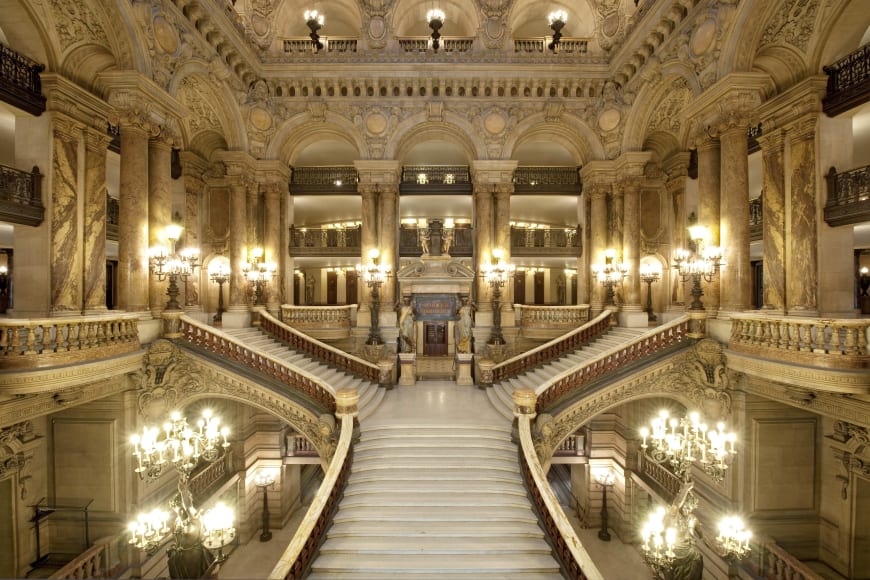
Le grand escalier

Le grand foyer © Brodbeck & de Barbuat / OnP

Gala, Défilé du Ballet, Palais Garnier © Agathe Poupeney / OnP

Vue de la salle de spectacle depuis le Foyer de la danse © Brodbeck & de Barbuat / OnP
